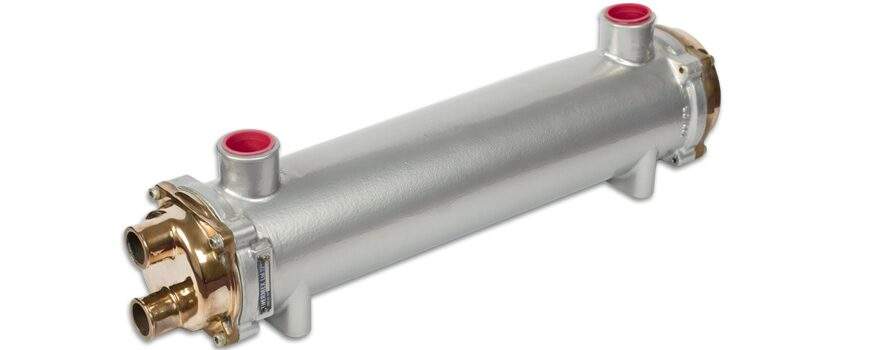Introduction
Marine grade heat exchangers are specially engineered devices designed to facilitate efficient heat transfer between fluids while resisting the harsh corrosive effects of seawater and marine atmospheres. Whether cooling powerful ship engines, desalinating seawater, or managing HVAC systems onboard, these heat exchangers play a vital role in ensuring system stability, safety, and performance.
Unlike standard industrial exchangers, marine-grade variants are constructed using advanced materials like titanium, cupronickel alloys, and stainless steel 316L, chosen for their superior resistance to corrosion and biofouling. They are built to comply with stringent marine classification standards set by organizations such as ABS, DNV, and Lloyd’s Register, ensuring long-term durability and reliability under continuous marine operation.
Detailed Types of Marine Heat Exchangers
- Shell and Tube Heat Exchangers
- Most common in marine engine cooling.
- One fluid flows through tubes; the other around them in the shell.
- Rugged and handles high pressure.
- Plate Heat Exchangers
- Uses stacked corrugated plates.
- More compact and easier to clean.
- Used in HVAC, freshwater generators, and lube oil cooling.
- Double Pipe Heat Exchangers
- Simple construction with two concentric pipes.
- Ideal for smaller heat duties and modular marine systems.
- Brazed Plate Heat Exchangers
- Compact, sealed units used for refrigerant and oil cooling.
- Typically used in small vessels or for specific equipment.
Common Fluids Involved
- Seawater (cooling medium)
- Engine Jacket Water (heat source)
- Lubricating Oil
- Refrigerant
- Freshwater (produced water or potable)
Corrosion Mechanisms in Marine Environments
Marine heat exchangers must resist:
- Galvanic Corrosion: Caused by dissimilar metals in seawater.
- Pitting Corrosion: Localized attack on metal surface.
- Crevice Corrosion: In confined areas where stagnant seawater settles.
- Biofouling: Growth of marine organisms like barnacles or algae that reduce efficiency.
Design & Engineering Considerations
- High Turbulence Design: Improves heat transfer, reduces fouling.
- Removable Tube Bundles: Ease of inspection and cleaning.
- Anode Protection (Sacrificial or Impressed Current): Corrosion protection.
- Anti-Fouling Coatings: Prevents marine growth on heat transfer surfaces.
- Bypass Arrangements: For maintenance or redundancy in critical operations.
Industry Standards & Compliance
Marine-grade exchangers must comply with regulations and certifications such as:
- American Bureau of Shipping (ABS)
- DNV (Det Norske Veritas)
- Lloyd’s Register
- Bureau Veritas
- IMO (International Maritime Organization) guidelines
These ensure that the equipment meets safety, environmental, and performance standards for marine use.
Maintenance & Cleaning Methods
- Mechanical Cleaning: Brushes, rods, or high-pressure jets.
- Chemical Descaling: Acidic solutions to remove scaling.
- Backflushing: Reversing fluid flow to dislodge debris.
- Scheduled Inspections: To prevent pitting and biofouling buildup.
- Anode Replacement: Regularly checking and replacing sacrificial anodes.
Current Trends & Innovations
- Modular Marine Cooling Systems: Plug-and-play compact exchangers.
- Hybrid Materials: Use of advanced polymers and composites with metal for better corrosion resistance.
- IoT Integration: Remote monitoring of temperature, fouling, and pressure drop.
- Self-Cleaning Technologies: Reducing manual intervention through turbulence-enhancing geometries and coatings.
Conclusion
Marine grade heat exchangers are more than just heat transfer devices—they are a cornerstone of reliability and efficiency in maritime operations. Their robust construction, corrosion-resistant materials, and compliance with global marine standards make them ideally suited for the most demanding sea-based applications. From engine cooling to desalination and onboard climate control, these exchangers ensure that critical systems operate at optimal temperatures, reducing downtime and extending equipment life.

